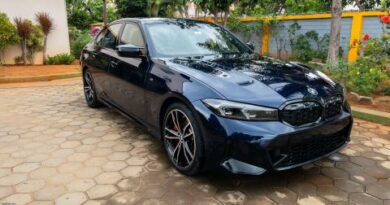2000 km road trip in an MG ZS EV: Range, charging, cost & other stats
Coming from a 2014 Toyota Innova to a fully electric car, there is a drastic change when it comes to interstate trips.
BHPian shrey220 recently shared this with other enthusiasts.
I recently took a 2000 km road trip in my 2022 MG ZS EV. The result? I’m absolutely in love with this car!
My purpose in writing this is not to start an ICE vs EV debate, but to highlight the factors one would experience in an EV road trip. Especially, when people are still skeptical about the extra time “wasted” during fast-charging sessions.
Being used to driving a 2014 Toyota Innova to a fully electric car, there is a drastic change when it comes to interstate trips.
The plan was to complete a loop from Pune, covering Surat, Udaipur, Ujjain, and back to base, to catch up with some old friends. All this with my dear friend, Shree.
Preparation
Currently, this is the only part of the trip planning which needs more attention.
Using the ‘Plug Share’ app, identify the fast charging stations in the route, check the location and availability on their respective apps by their service providers (Jio Pulse, Charge zone, etc), and download and register your details in the app. I usually don’t add money to the app wallets until I’m at the location.
Usually, my car returns a range of about 350 km (50kWh battery pack) with Aircon (7km/ kWh). So I plan to stop at every 175-200 km or 3 hours of driving, whichever is earlier. These are mostly 15 to 30-minute breaks for a quick snack or a bio break. A 30-minute break is enough to juice up about 15-30 kWh into the battery, depending on the speed of the charger. The most common ones are either 30kWh or 60 kWh. I never charge beyond 90% on a fast charger, as the charging speeds drop drastically and it’s just a waste of time unless one desperately needs the extra 10% battery. Always consider a backup charger and a decent amount of range to drive to that charger while planning.
The Journey
Day 1: Pune to Surat
Started with (47 kWh usable) 100% SOC
Distance: 430 km
Travel time by Google Maps: 8 hr
1 quick charging stop
Actual travel time with breaks: 9 hr
Charged 95% in Surat for the next day.
Day 2: Surat to Udaipur
Distance: 513 km
Travel time by Google Maps: 9 hr
2 quick charging breaks
Actual travel time with breaks: 10 hr
Stayed in Udaipur for days 3, 4, and 5.
Charged 95% in Udaipur for the next day.
Day 6: Udaipur to Ujjain
Distance: 334 km
Travel time by Google Maps: 6 hr 50 min
1 quick charging break
Actual travel time with breaks: 7 hr 10 min
Stayed in Ujjain for day 7.
Charged 94% in Ujjain for the next day.
Day 8: Ujjain To Pune
Distance 657 km
Travel time by Google Maps: 14 hr
3 quick charging breaks
1 failed charging attempt due to a charger communication issue with the car. Used another charger 28 km ahead.
Actual travel time with breaks: 15 hr 30 min
Stats:
- Total distance covered: 2197 km
- Total energy added: 296 kWh
- Balance energy in the battery: 8 kWh (16% SOC)
- Total energy consumed: 288 kWh
- Total cost for fast charging: 4982/-
- Consumption: 7.62 km/kWh OR 131 Wh/km
- Range: 381 km with Aircon and 100% SOC
- KERS: level 1 on the highway and level 3 in the city. Manually switched to level 3 on the highway for anticipated slowdowns.
Note: The average speed indicated in the trip summary is 48 km/h which includes idling for 1 hour with Aircon and almost 300 km of city driving during the stay.
Summary: The time spent for fast charging the car does not matter if you plan your stops well. The charging infrastructure and speed is getting better each year. Long drives are absolutely possible with EVs in 2023.
Being an EV enthusiast, buying the MG ZS EV has been one of my best decisions!
Check out BHPian comments for more insights and information.
Source: Read Full Article





